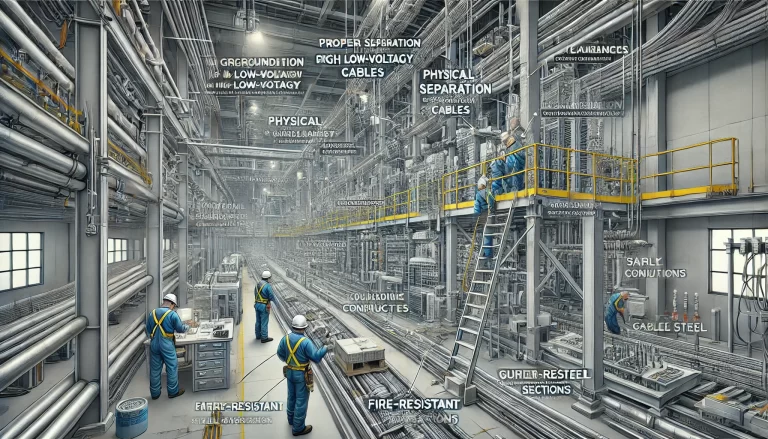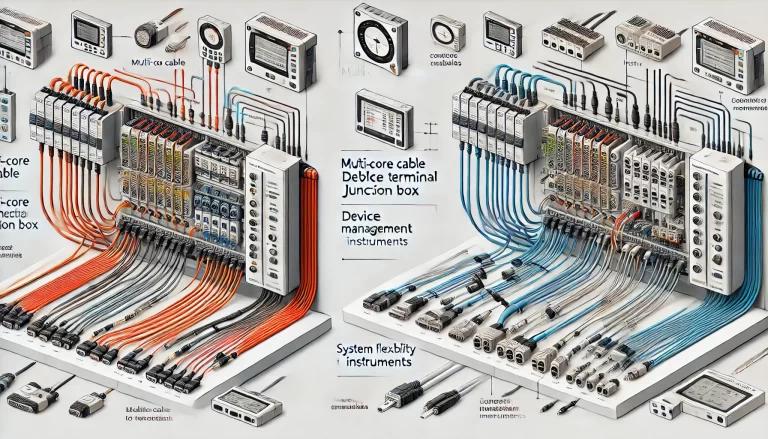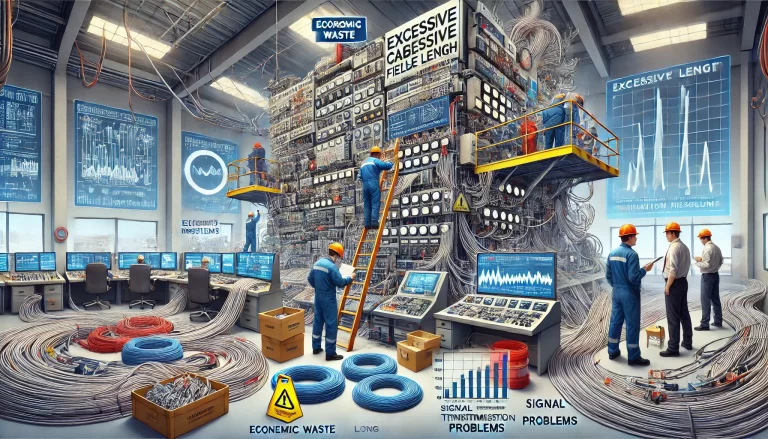In industrial automation and control systems, the selection and arrangement of cables are crucial for system stability and ease of maintenance. The following is an analysis of the advantages and disadvantages of two methods: using multi-core cables to connect to the device terminal junction box, then branching out to instruments, and directly connecting cables to the instruments.

Advantages of Using Multi-core Cables to the Device Terminal Junction Box with Branch Cables Connecting to Instruments
Space and Cost Efficiency:
By using multi-core cables, the number of individual cables is reduced, saving space and lowering material costs. This solution simplifies cable management by minimizing the need for multiple single-core cables running separately, which in turn reduces the required cable channels and installation space.Ease of Maintenance:
The junction box centralizes cable connections, making it easier to manage and troubleshoot the system. Faults or issues can be quickly identified and addressed, which is particularly useful in large systems where cables may be spread out over a wide area. Centralized management also simplifies routine inspections and upgrades, reducing downtime during maintenance.High Flexibility:
During the design phase, branch cables can be arranged according to specific needs, allowing for future adjustments as system configurations change. This flexibility is advantageous when dealing with dynamic environments, where the addition or modification of instruments may be frequent. The ability to reconfigure wiring without needing to overhaul the entire system makes this approach highly adaptable.

Disadvantages of Using Multi-core Cables to the Device Terminal Junction Box with Branch Cables Connecting to Instruments
Increased Complexity:
The addition of junction boxes and branch cables introduces complexity into the system. In large-scale systems, this can lead to tangled or disorganized wiring, which may result in errors during installation and troubleshooting. The complexity of managing many connections in a centralized location may also create difficulties in large projects, particularly if the junction box is not clearly labeled or organized.Potential for Interference:
Without proper shielding and grounding, the branch cables may introduce electromagnetic interference (EMI), which can degrade signal quality. EMI is especially problematic in sensitive instruments where precise data transmission is required. To avoid this issue, careful attention must be paid to grounding, cable shielding, and maintaining adequate separation between power and signal cables.Longer Installation Time:
While the multi-core cable solution may save costs in the long run, it often requires more time to install initially. The process of setting up junction boxes, planning cable routes, and attaching branch cables can extend installation timelines. This could be a disadvantage in projects that require rapid deployment.

Advantages of Directly Connecting Cables to Instruments
Simplicity and Directness:
Direct connection eliminates the need for intermediate junction boxes and additional cabling, simplifying the wiring process. This results in fewer components, making the system easier to install and manage. The direct connection approach reduces the overall complexity of the installation, especially for smaller systems where fewer connections are needed.Reduced Risk of Interference:
By eliminating the intermediary step of branching out through junction boxes, direct cable connections lower the risk of introducing electromagnetic interference (EMI). The fewer the cables and connectors involved, the lower the likelihood of signal degradation. This is particularly important in systems that require high-precision instrumentation and where EMI can significantly affect the accuracy of data.Faster Installation:
Directly connecting cables to instruments can speed up the installation process, as there are fewer steps involved. This method is particularly suitable for smaller systems or where time constraints require a quick setup. It eliminates the need to plan for junction boxes and branch cables, reducing both physical installation time and design complexity.

Disadvantages of Directly Connecting Cables to Instruments
Difficult Maintenance:
One of the major downsides of directly connecting cables to instruments is that maintenance and troubleshooting become more challenging. If a fault occurs, it can be harder to trace and resolve since there are no centralized points for managing the connections. Additionally, any changes in system configuration, such as adding new instruments or modifying existing ones, may require significant rewiring, complicating future maintenance.Limited Expandability:
Direct connections offer limited flexibility when expanding the system. Adding new instruments or reconfiguring the layout can be cumbersome and may require the installation of new cables or rearranging existing connections. This lack of scalability can become a disadvantage as the system grows and evolves over time.Potential Higher Costs in the Long Term:
Although direct connections may initially seem less expensive due to fewer components, the overall cost could rise in the long term. As the system expands or requires modifications, additional cables and wiring may be needed. Furthermore, the difficulty of maintenance and the potential for more frequent faults could lead to higher service costs over time.

Conclusion
The choice between using multi-core cables to the device terminal junction box with branch cables connecting to instruments and directly connecting cables to instruments depends on the specific requirements of the application. The multi-core cable and junction box solution is more suited for large-scale systems, where flexibility, ease of maintenance, and future expandability are crucial. On the other hand, the direct connection method is ideal for smaller systems or projects that require faster installation, simpler configuration, and reduced interference.
In the design and implementation process, factors such as cost, ease of maintenance, signal integrity, and system scalability should be carefully evaluated to determine the most appropriate solution. Each approach has its strengths and weaknesses, and the optimal choice depends on the unique needs of the project.
